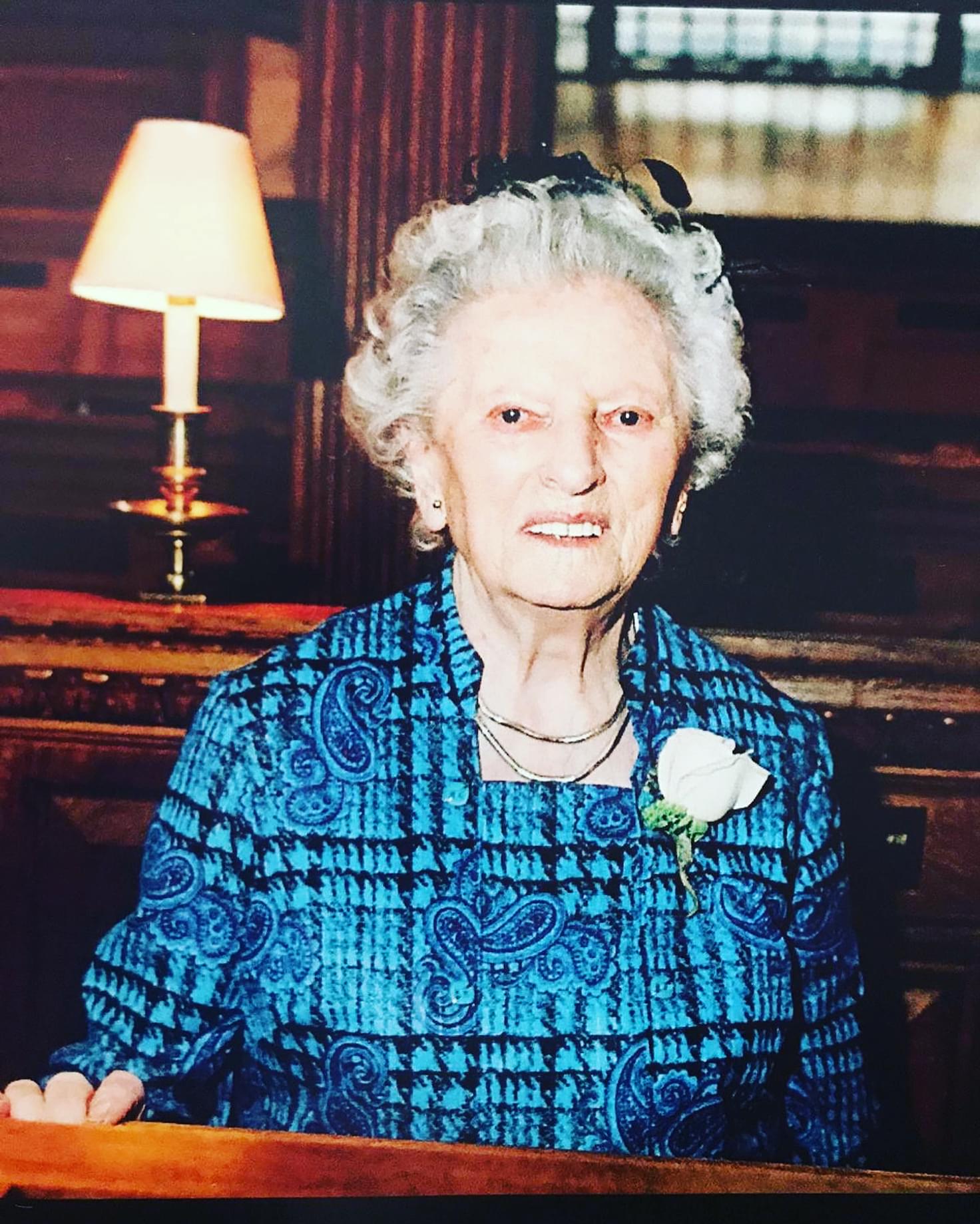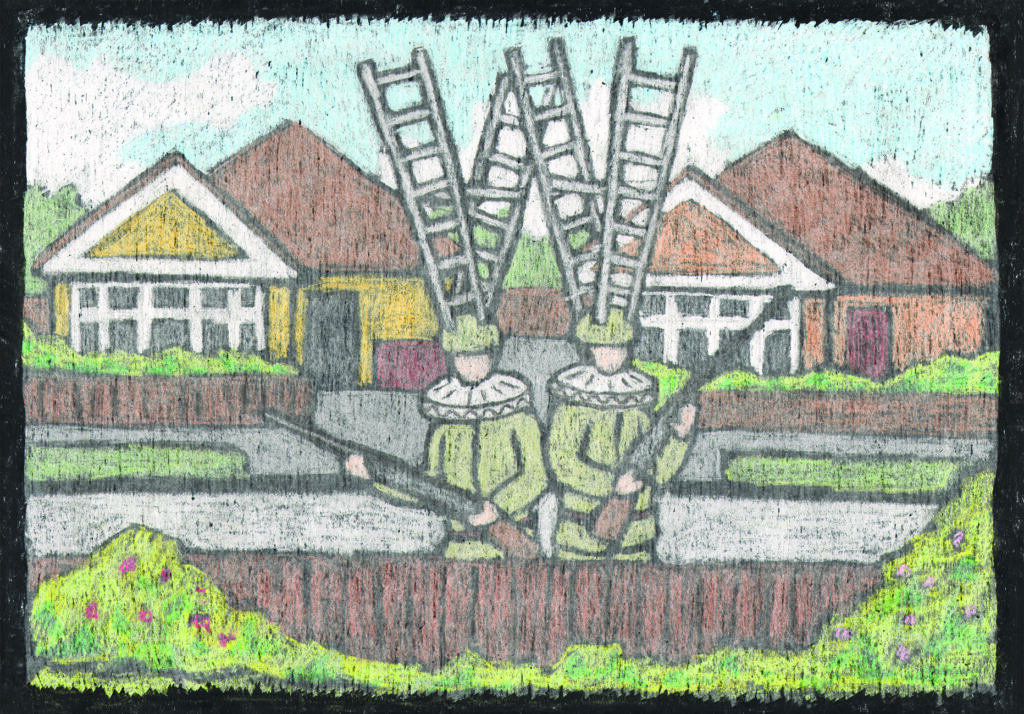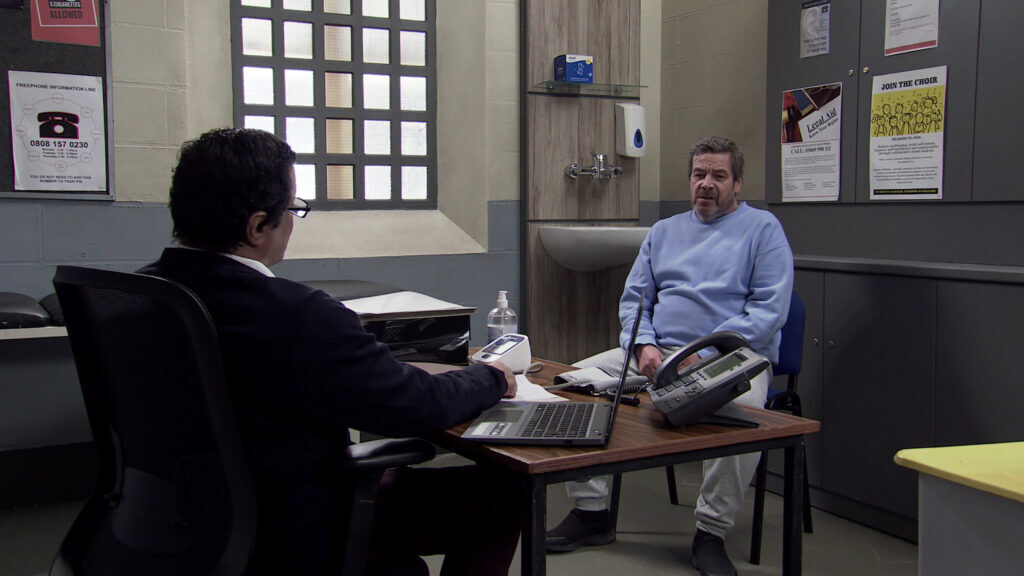
Words by Abi Scaife
When Judith Pott’s mother Esme developed glaucoma, an eye condition where the optic nerve becomes damaged, she began seeing things that weren’t there.
Esme was in her early 90s at the time and Judith’s immediate thought was that she must have dementia - but not everything added up.
“One day she said to me, I do wish these people would get off my sofa. I thought it strange because clearly there was no one sitting on her sofa. I took a deep breath and thought ‘oh my god, she's got dementia’.”
Esme also complained about a child dressed in Edwardian clothing who she believed was following her everywhere. “Every time I turn around the child is there," she told Judith.
But that wasn't all. "There's a hideous gargoyle-like creature that jumps from table to chair and sometimes the whole place morphs into an alien environment," she told her confused daughter.

Judith went home and, with the help of her husband, found a tiny paragraph in the health section of a newspaper describing almost exactly what her mother was suffering from. They called it ‘Charles Bonnet Syndrome’.
Unfortunately, that’s where the trouble started. Both Esme’s ophthalmologist and her GP refused to discuss the possibility of her having Charles Bonnet Syndrome - known as CBS.
Eventually, Judith discovered a professor at Kings College London, Dominic Ffytche, who was able to confirm that Judith did indeed have the syndrome.
“He explained to me that when you have full sight there are messages all the time going from the eye to the brain. When your sight diminishes, those messages slow down or stop entirely, which leaves the brain with nothing to interpret,” relays Judith.
“For some reason we still don’t understand, the brain then fires up and creates its own images - and these can range from tolerable to terrifying,” she adds.
It’s incredibly important to stress that CBS is not a mental health issue. CBS results purely from your brain overcompensating for what it can no longer see.

Judith began writing about CBS, trying to raise awareness. After her mother sadly passed away, she created Esme’s Umbrella - a charity working for greater awareness of Charles Bonnet Syndrome.
Judith’s tireless work even influenced a storyline for Coronation Street, in which the character, Johnny Connor, began to suffer with CBS. Actor Richard Hawley, who played Johnny, went on to become a patron for Esme’s Umbrella.
“I worked with Judith and she told me some of the coping mechanisms that people use when they start hallucinating,” says Richard. “You can't switch it off - it could be frightening, it could be funny. It can be all sorts of things. It can be geometric shapes. One person said it's like watching a horror film that you don't want to watch and you can't switch it off.”
Richard’s character on Coronation Street made millions of people aware of CBS and Esme’s Umbrella. Since the storyline aired, Judith has had countless calls from people who have recognised CBS in themselves or a loved one, after seeing it on television.

“The reaction was really moving. People would come up to me in the street and say they realised a grandparent had CBS and it explained what was going on,” says Richard. “Interestingly, people would come up and tell me they realised that someone who had died had it. They'd lived with that person, thinking they were going nuts and it gave them some closure to understand what had been going on. I think that's a really important part of it - and that an awful lot more medical health professionals have heard of it.”
With the help of Richard as a patron, Esme’s Umbrella has been running support groups, reaching out to the public and health services to educate them about CBS. They've been working hard to petition for more assistance for CBS sufferers. It’s a huge amount of work for a relatively small charity, but Judith shows no signs of slowing.
“I would like every single doctor to know about the condition because they're wasting precious NHS resources by sending people to psychiatrists when they don't need to,” says Judith. “My aim is to have every single doctor knowing what CBS is, understanding it and knowing where to send people for advice.”
If you want to learn more about Charles Bonnet Syndrome, or the work of Esme’s Umbrella, you can visit the Esme’s Umbrella website.
Charity check-in
At Smiley Movement, we like to elevate the work of charities across the world. Here are three charities whose causes align with the themes in this article.
RNIB. This charity offers support to blind and partially sighted people across the UK. Learn more here.
BlindAid. This is London's oldest charity for blind and visually impaired people, working to improve quality of life and promote independence. Support them here.
Guide Dogs UK. Guide Dogs supports and raises awareness for blind and partially sighted people. Find out more here.
This article aligns with the UN SDG Good Health and Wellbeing.